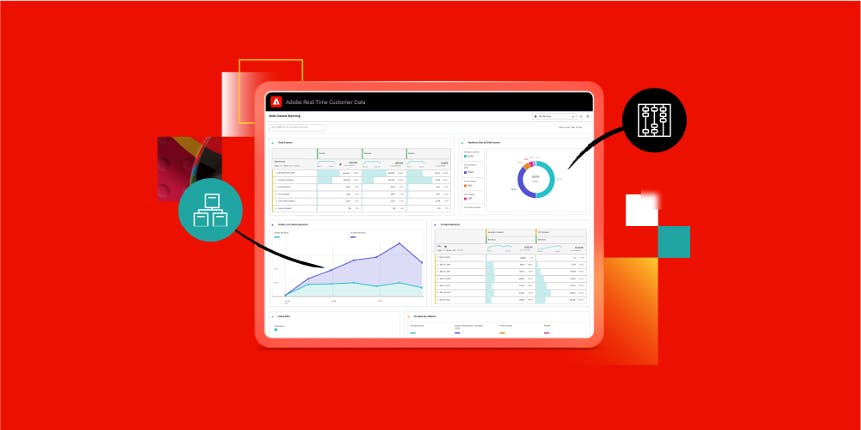For Marketers, Martech Leads & Implementation Partners
Executive Summary
Adobe Real-Time Customer Data Platform (RT-CDP) is engineered to deliver unified profiles, intelligent segmentation, and cross-channel activation. But even well-intentioned deployments often fall short. Misconfiguration is the silent killer of CDP ROI—introducing profile gaps, activation issues, or compliance risks without tripping visible errors.
This article reveals the top 5 misconfiguration symptoms, how to diagnose them, and the exact steps to get your CDP back on track.
Why Misconfiguration Happens (Even in Mature Teams)
Adobe RT-CDP is modular, powerful, and customizable—but that flexibility also opens the door for:
- Partial ingestion or mapping errors
- Misaligned merge policies
- Governance enforcement silently blocking campaigns
- Over-reliance on batch processing instead of edge activation
Without proactive audits, most of these go unnoticed. Until performance stalls.
1. Real-Time Activation Feels… Slow
Symptom: “Real-time” segments aren’t activating fast enough. Campaigns miss behavioral intent windows.
Root Cause:
Adobe RT-CDP updates segments on a 15–60 min cycle—unless you’re using Edge Segmentation. Teams expecting sub-minute latency often misconfigure profiles to depend on batch ingestion instead.
Fix:
- Use Adobe Edge Network + Web SDK for real-time profile stitching.
- Rebuild segments to rely on streaming attributes available in Edge.
- For high-velocity use cases (e.g., cart abandonment), leverage Journey Optimizer instead of batch CDP syncs.
2. Duplicate or Orphaned Profiles Are Common
Symptom: A single user appears as multiple personas across platforms (web, app, email).
Root Cause:
Incomplete or misaligned identity mapping—especially missing ECID, hashed emails, or CRM ID in key datasets.
Fix:
- Audit Identity Graphs in Adobe Identity Service
- Ensure every dataset includes at least one declared identity namespace
- Review Merge Policies: set primary identities clearly (e.g., CRM ID for known users)
3. Audience Delivery Doesn’t Match Segment Size
Symptom: Segment says 1.2M profiles, but only 600K are reaching destinations (CRM, DSP, ESP).
Root Cause:
- Exceeding activation limits (e.g., destinations, segment size)
- Governance violations silently blocking data delivery
- Inconsistent labeling of marketing-consented data
Fix:
- Check Destination Monitoring Logs for failure rates or blocked activations
- Apply correct data usage labels (e.g., C11, MKTG) in AEP
- Consolidate overlapping audiences and reduce export frequency
4. Segments Feel Too Generic
Symptom: Segments are built only on demographics or static traits. Campaign performance is flat.
Root Cause:
Many RT-CDP implementations skip Computed Attributes—missing out on behavioral intelligence.
Fix:
- Create computed attributes such as:
- Total purchases in last 30 days
- Time since last interaction
- High-value product affinity
- Total purchases in last 30 days
- Use COUNT, SUM, MOST_RECENT, or AVERAGE logic in attribute composition
- Build dynamic segments using these behavioral scores
5. Campaigns Blocked Due to Governance Policies
Symptom: Campaigns silently fail or certain audiences are never activated.
Root Cause:
Adobe RT-CDP includes strict policy enforcement via data governance rules. If data lacks proper usage labels or crosses policy constraints, it may be blocked without UI alerts.
Fix:
- In Data Governance > Policy Enforcement, review recent blocking events
- Apply consent, regulation, and marketing usage labels at dataset level
- Map activation channels to compliant datasets only
Pro Tip: Most Misconfigurations Are Silent
RT-CDP won’t break when misconfigured—it just stops producing ROI.
That’s why it’s critical for implementation partners, in-house martech teams, and campaign owners to collaborate regularly using a shared CDP governance framework.
Quick Reference: Misconfiguration Diagnostic Table
| Symptom | Root Cause | Fix |
| Activation delays | No Edge segmentation | Shift to Web SDK + Edge network |
| Duplicate profiles | Identity merge issues | Audit ECID/CRM IDs + update merge rules |
| Partial destination delivery | Governance or limit constraints | Review labels, caps, and sync strategy |
| Flat audience performance | Static segments only | Introduce computed behavioral attributes |
| Silent campaign blocks | Data usage labels missing | Add governance and policy enforcement |
Real Example: How One Media Tech Firm Recovered
Context:
A B2C tech brand deployed Adobe RT-CDP across 3 business units. Campaign results underwhelmed—flat ROAS, low engagement.
Findings from Audit:
- 45% of profiles were unstitched across mobile + web
- Zero computed attributes were used in segmentation
- 2 destinations were silently blocked due to missing governance labels
Fix:
- Enabled full merge policy across ECID + CRM
- Created computed attributes for engagement recency
- Updated consent and marketing usage labels for all datasets
Result:
- +31% segment match rate improvement
- +18% CTR across dynamic personalized email journeys
- Reduced audience duplication by 37%
Final Thoughts
Misconfiguration is the #1 reason CDP initiatives underperform. Adobe RT-CDP is powerful—but only when configured with precision and proactively maintained.
You now have a checklist to identify and fix the most common (and silent) causes of CDP underperformance.
Need Help?
AEM Analytics specializes in Adobe Experience Platform audits, reconfiguration, and activation consulting.
Whether you’re in pre-deployment, mid-rollout, or struggling post-launch—we’ll help you turn your CDP into a measurable growth engine.
→ Schedule a 45-min Technical Health Check
Recommended Resources
- Adobe Real-Time CDP Implementation Guide
- Adobe Identity Service Documentation
- Data Governance & Labeling Best Practices

